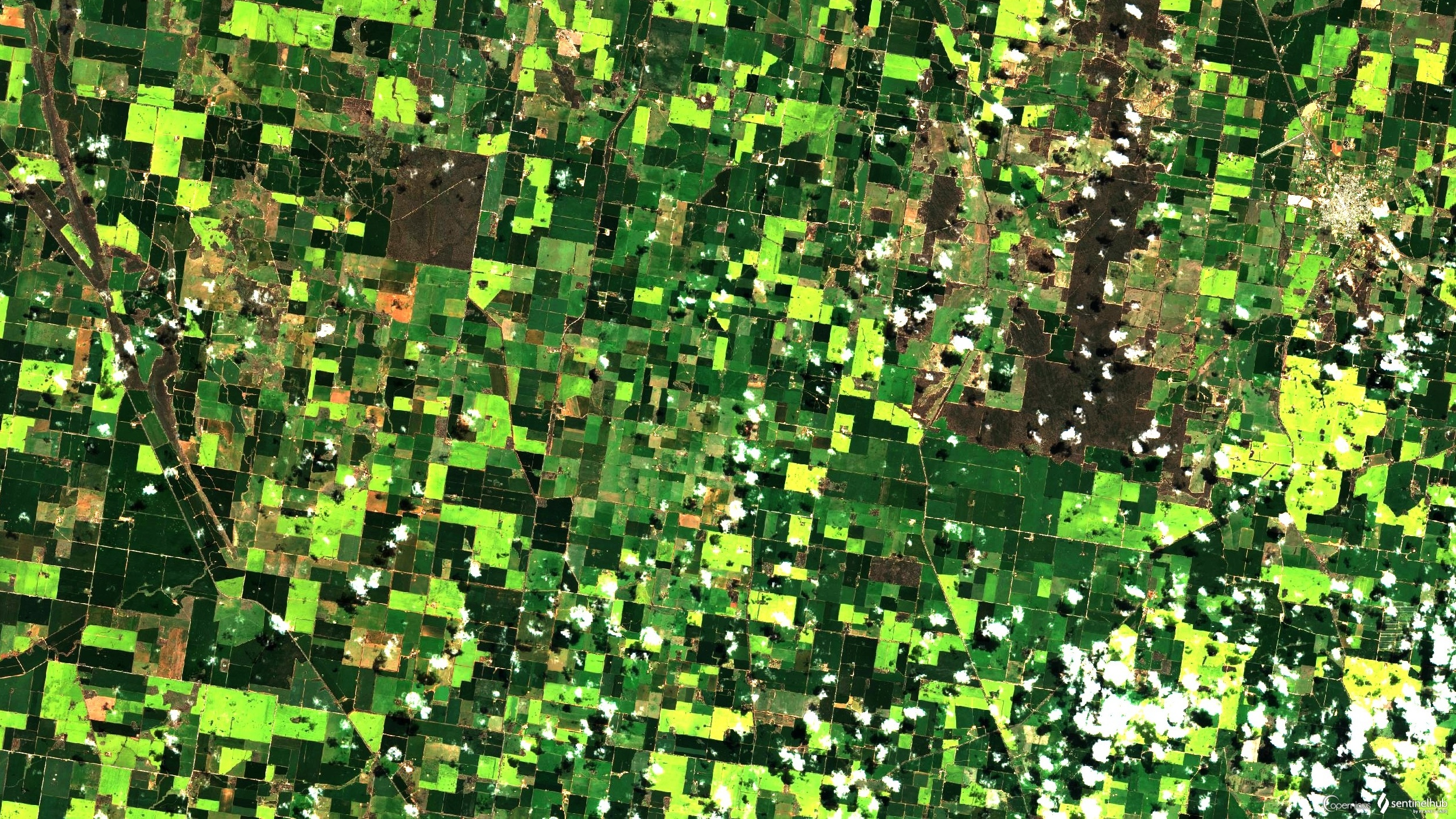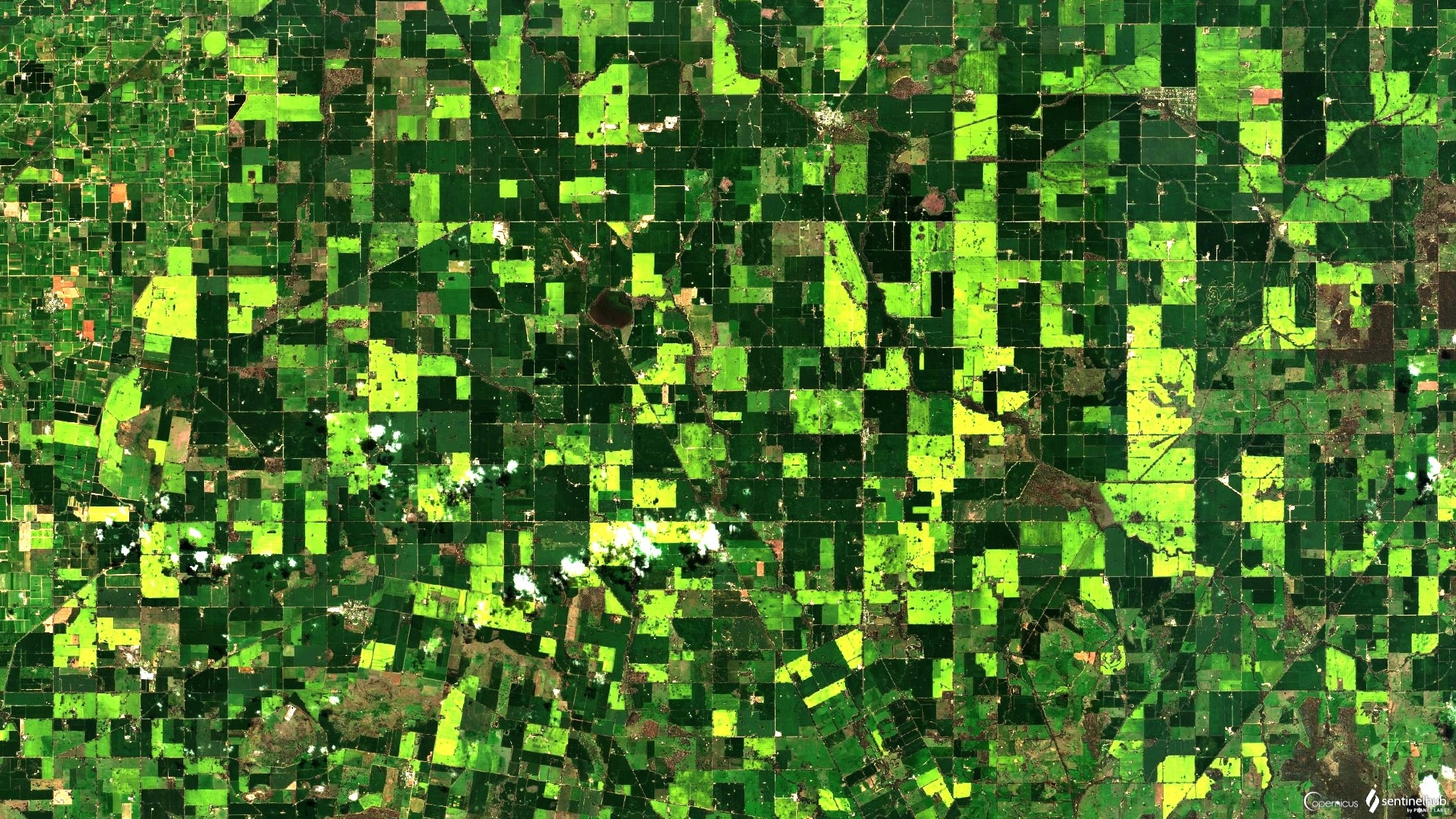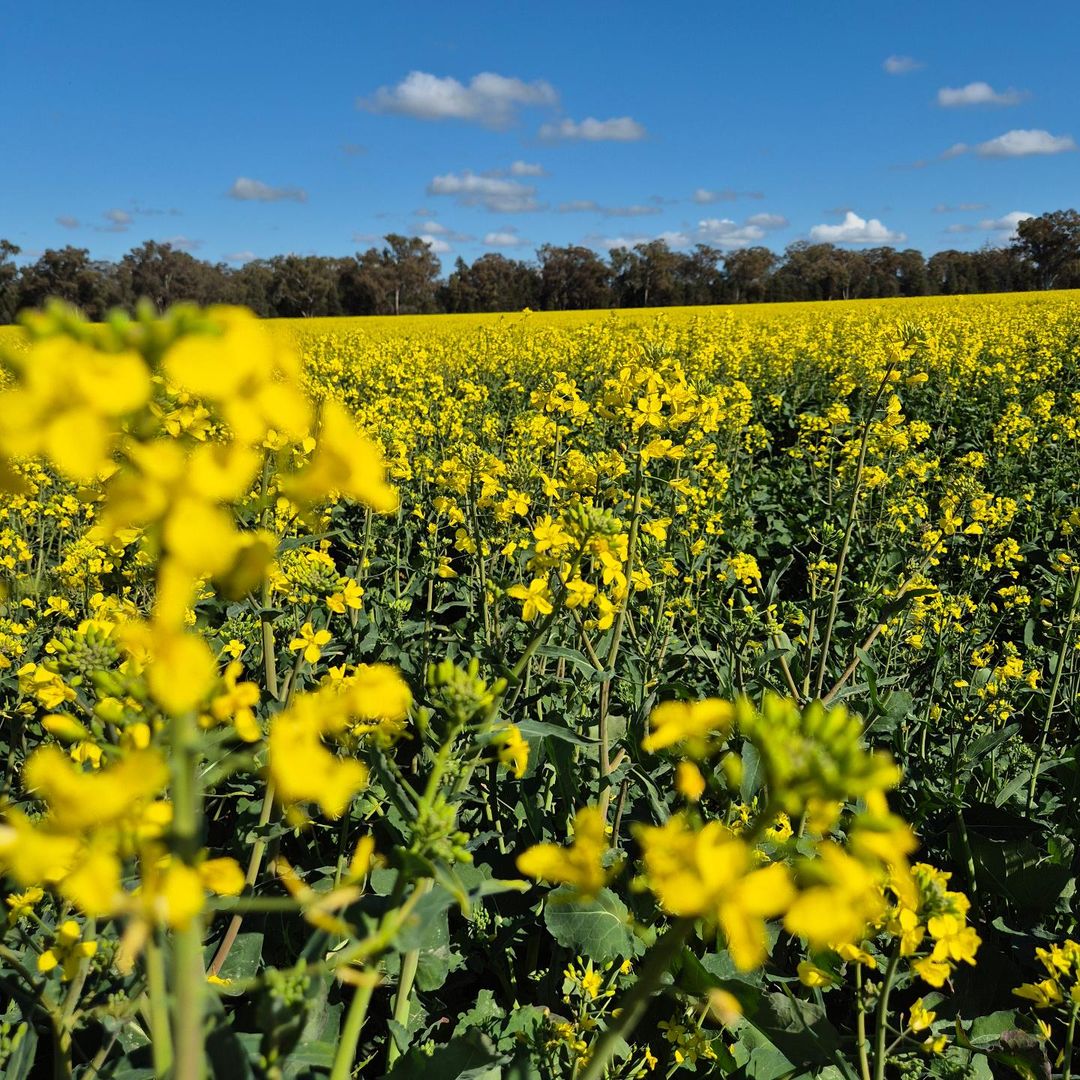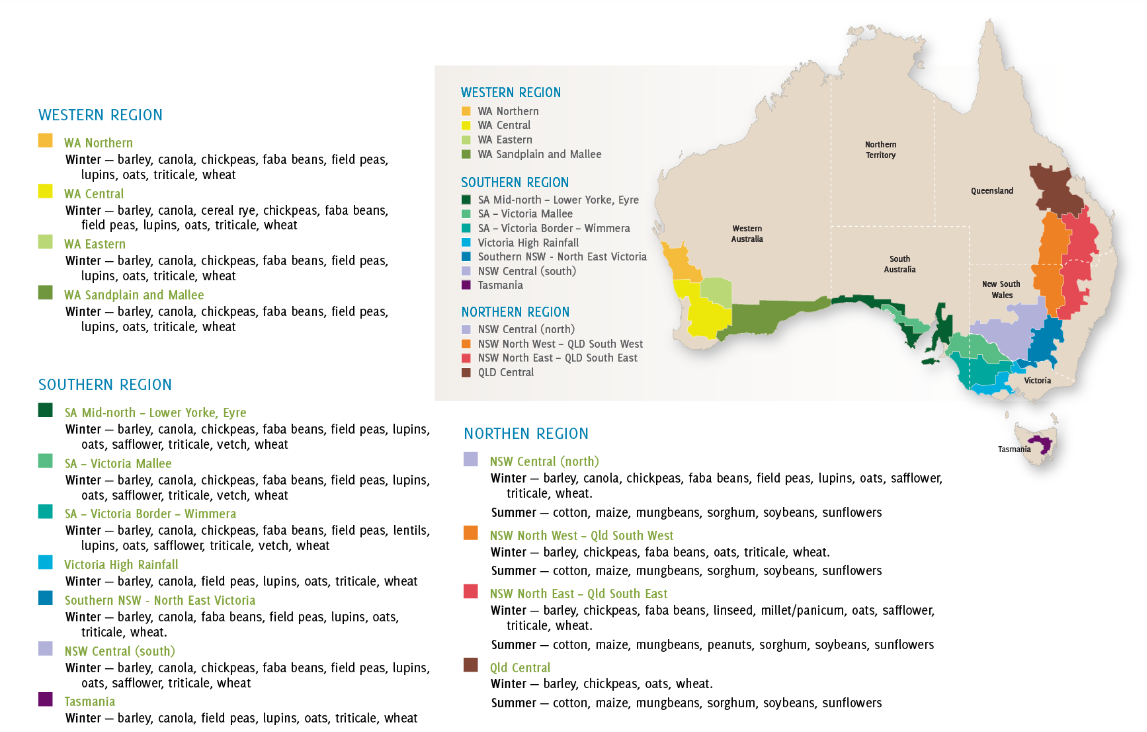Golden Aussie canola crop glows from space
Fields of golden canola are flowering in Australia, and it's an incredible sight as seen from satellites orbiting the Earth.
The bright yellow fields of canola in the image below are located in the northern part of the Riverina region of New South Wales, with the town of Temora (population 4,000) visible in the top right corner of the image.

Image: Canola fileds in the NSW Riverina. Source: Sentinel-2.
And below is a view of the canola fields in northern Victoria between the towns of Shepparton and Yarrawonga.

Image: Canola fields in northern Vic. Source: Sentinel-2.
Any way you look at it, it’s quite a sight.
And the colourful crop is no less spectacular up close.

Image: A canola field in western NSW in August 2024. Source: @Coolamoncheese co on Instagram.
- Canola is one of Australia's most important grain crops. While wheat is by far our largest grain crop with around 25 million tonnes produced each year, canola is increasingly significant as both an export crop and as a crop consumed domestically.
- According to the Australian Export Grains Innovation Centre, we currently produce more than 3.5 million tonnes per year on average, which accounts for 15-20% of the world’s export trade.
- Australian canola is sought after globally for its use as a food-grade oil, for biofuel production and as a stock feed. Have you consumed margarine or vegetable oil lately? Then it’s likely that it contained Australian-grown canola.
- Western Australia is our main canola-growing state, followed by New South Wales and Victoria in that order. The crop is sown in winter and harvested anywhere from spring to early summer, depending on its location.
The oil from canola is extracted by crushing the seeds. After the oil is extracted, the by-product is a protein-rich meal which is fed to livestock. Canola can also be cut for hay in dry seasons.
Areas with 450 mm to 700 mm of annual rainfall are ideal for growing canola, although it can be grown in slightly drier areas. To put that in perspective, Canberra, Melbourne, Adelaide and Hobart are the four Australian capital cities whose annual average rainfall totals all fall in that range.
"The vast majority of canola is grown in Australia on dryland non-irrigation," agronomist and canola grower James Kanaley told Weatherzone. "Irrigated canola could make up for less than 5% of total production I would estimate, and would only use on average 2.5ML/ha of water.
"My home farm is near Junee on what we call the "canola trail". The trail is a collaboration between a couple of shire councils including Junee, an area which has been growing canola since the late '80s and early '90s.
"Canola is a very important rotation crop in cropping systems in australia, gives us a good break from cereal diseases, adds diversity and allows us to rotate herbicide options for weed control.

Image: Australia's grain-growing areas. Source: AEGIC.
The map above shows Australia's grain-growing areas, and what is grown where.
As beautiful as those golden fields of canola look from space or from up close, they look even better on the bottom line of Australia's economy.